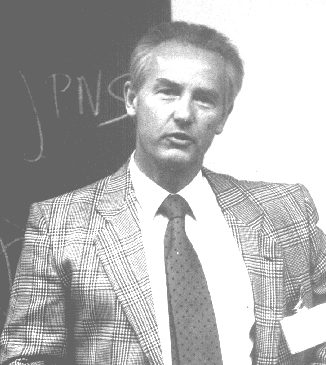
Le Professeur Wolfgang Oppolzer est décédé à Genève le 15 mars 1996.
Oraison funèbre (en anglais)
Wolfgang Oppolzer was born in Vienna, Austria, on August 4, 1937 and died in Geneva, Switzerland, on March 15, 1996. His life was too short, but his accomplishments were many.
Following his undergraduate studies at the University of Vienna, Wolfgang Oppolzer moved to Zurich in 1960 and joined the group of Prof. V. Prelog at the Swiss Federal Institute of Technology (ETH). Working on the structures of rifamycines, he obtained his doctorate in 1964. This was followed by a postdoctoral research fellowship at Harvard University with Prof. E.J. Corey studying sulfur ylids, and two years in Basel in the Woodward Research Institute under Prof. R.B. Woodward where he worked on the synthesis of cephalosporin.
In 1967 he joined the Sandoz company as a research chemist and worked on heterocyclic nitrogen compounds. In the course of these studies he started his work on intramolecular cycloadditions. His use of orthoquinodimethane in an intramolecular Diels-Alder reaction, as a key step in the synthesis of chelidonine, (1971) was a striking achievement. The elegance and efficiency of this reaction and his imaginative use of this strategy in the synthesis of steroids, (-)-pumiliotoxin-C, norpatchoulenol, himachalenes and lysergic acid rapidly earned him a high international reputation in the field of organic synthesis. This work was carried out at the University of Geneva where he had joined the faculty in 1974 and had became full professor the following year.
Wolfgang Oppolzer's main research activities focused on the development of new synthetic methods such as stereocontrolled (thermal, photochemical and organometallic) cycloaddition and cyclization reactions. From 1979 on he devoted a major part of his research activities to asymmetric synthesis using and developing chiral auxiliaries, reagents and catalysts. Strategic applications of these studies to the total synthesis of natural products feature a broad range of heterocyclic, carbocyclic and acyclic chiral molecules involving alkaloids, pheromones, terpenoids, steroids, macrolides, marine polypropionates, etc. His ingenious applications of the metal-ene reaction and use of chiral molecules as auxiliaries and catalysts are just a few of his significant contributions. He was one of the first to exploit pericyclic reactions in order to build molecular structures with economy and elegance. He lectured widely in industrial and academic establishments and at many national and international meetings and he also served on the editorial board of Helvetica Chimica Acta and on the consulting editorial boards for Tetrahedron publications. The results of his work are contained in more than 200 publications in professional journals.
This outstanding career has brought with it a host of distinctions. In 1982 he gave the Hofmann lecture to the Society of German Chemists followed in 1984 by the Simonsen Lecture to the Royal Society of Chemistry in London. In 1985 he received the Cliff S. Hamilton Award at the University of Nebraska, in 1987 the Ernest-Guenther Award from the American Chemical Society, in 1991 the Otto-Wallach Plakette from the Society of German Chemists, and in 1994 the Quilico Medal from the Italian Chemical Society. In 1993 he was president of the prestigious Bürgenstock conference on stereochemistry (photo).
Wolfgang Oppolzer's life was chemistry: of that there was no doubt. However, as my colleague for many years I cannot help but mention some of his personal attributes - his enormous drive and enthusiasm, his passion for the mountains, his skiing exploits, his love of opera and classic music, and his appreciation of good food and wine.
Wolfgang was a colleague of charm and intelligence. His presence is missed both as a man and as a chemist.
E. Peter Kündig
Symposium en mémoire de Wolfgang Oppolzer
Un symposium en mémoire de Wolfgang Oppolzer a été organisé annuellement entre 1996 et 2011.
Voir Oppolzer Lectures.
